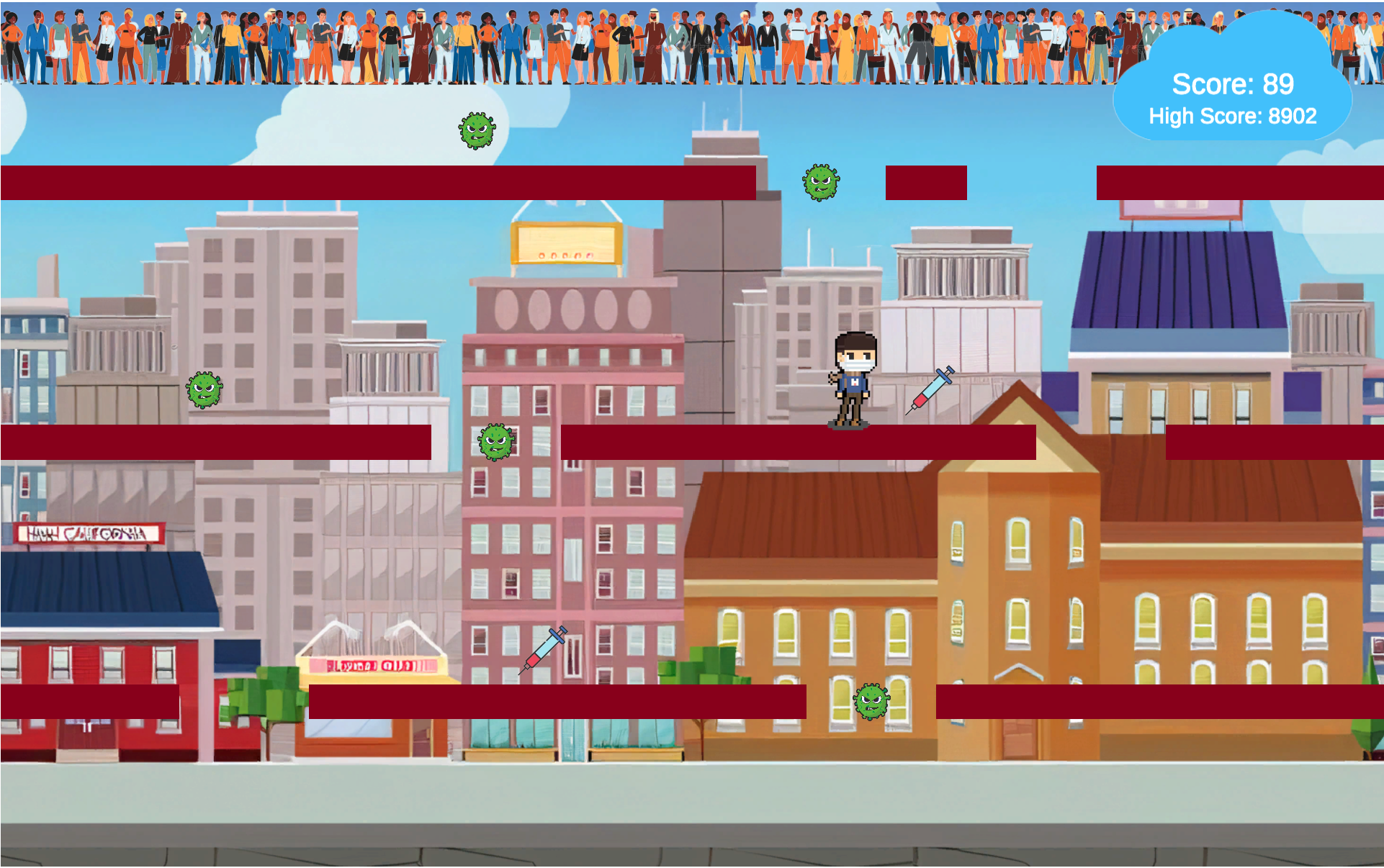
Background
This course was a second year computer science course called game design. The course covered game design and development processes, creative techniques for stimulating the generation of design ideas, techniques for evaluating the success of game designs, and techniques for game prototyping.
To gain practical experience in game design, we were tasked to work on a group project involving the iterative design, evaluation and implementation of a simple digital game. The game I created for the course is outlined in detail below.
Click here to learn more about the course.
The Project
While this was a group project, I did all of the coding for the game while my other group members wrote most of the reports.
It was decided to make an educational platformer game to help players learn more about COVID-19. The goal of the game is to survive as long as possible without hitting the walls or the roof of the screen, which would cause you to lose the round. If the round is lost then the player is prompted with a quiz, which, if answered correctly, may allow the player to continue the round.
The Program
The game was created using Unity, which requires a lot of c# script. Most of the sprites (images) used for the game were taken from the internet and a few were made in Microsoft Paint.
To make the game more dynamic than simple constant moving platforms, it was decided to add 4 different control layers for the speed of the platforms. The controls for the speed of the platforms were based on time, position, vaccines and viruses. The platforms speed up the longer the round lasts. They also speed up if the player comes in contact with a virus or if a player gets too close to the bottom of the screen. The only way to slow down the platforms is to come in contact with a vaccine.